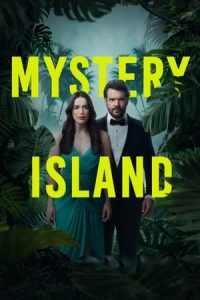- Source: John Alcott
John Alcott, BSC (27 November 1930 – 28 July 1986) was an English cinematographer known for his four collaborations with director Stanley Kubrick: 2001: A Space Odyssey (1968), for which he took over as lighting cameraman from Geoffrey Unsworth in mid-shoot, A Clockwork Orange (1971), Barry Lyndon (1975), the film for which he won his Oscar, and The Shining (1980). Alcott died from a heart attack in Cannes, France, in July 1986; he was 55. He received a tribute at the end of his last film No Way Out starring Kevin Costner.
Life
John Alcott was born in Isleworth, England, in 1930.
John's father was Arthur Alcott, a film executive. At a young age, Alcott started his career in film by becoming a clapper boy, which was the lowest position in the camera crew chain. As time progressed however, he moved his way up and eventually became the third highest position of the camera following the lighting cameraman and the main camera operator. His position was extremely important, as his job was to adjust, focus and measure the lens and distance between the actor or object being shot and the camera itself.
Alcott's big break was given to him by Stanley Kubrick, who was a master cinematographer, director, and producer. Kubrick promoted Alcott to lighting cameraman in 1968 while working on 2001: A Space Odyssey and from there the two created an inseparable collaboration, in which they worked together on all Kubrick's films until Alcott's death. In 1971, Kubrick then elevated Alcott to director of photography on A Clockwork Orange which was nominated for four Academy Awards in Best Picture, Best Director, Best Adapted Screenplay and Best Film Editing; however, the film did not win in any category.
Alcott studied lighting and how the light fell in the rooms of a set. He would do this so that when he shot his work it would look like natural lighting, not stage lighting. It was this extra work and research that made his films look so visually beautiful.
Three films Alcott worked on were ranked between 1950 and 1997 in the top 20 of “Best Shot”, voted by the American Society of Cinematographers.
Not only was Alcott a highly regarded cinematographer, in the 1980s when he immigrated to the United States he directed and shot commercials for television at the well known Paisley Productions, based in Hollywood.
Death
While in Cannes, France, Alcott suffered a heart attack and died on 28 July 1986. In his memory and honour, the "BSC John Alcott ARRI Award" was created by the British Society of Cinematographers to honour fellow lighting cameramen in film. Alcott was survived by his wife Sue and son Gavin, who followed in his father's footsteps.
Filmography
2001: A Space Odyssey (1968)
A Clockwork Orange (1971)
Little Malcolm (1974)
Overlord (1975)
Barry Lyndon (1975)
March or Die (1977)
The Disappearance (1977)
Who Is Killing the Great Chefs of Europe? (1978)
The Shining (1980)
Terror Train (1980)
Fangio – Una vita a 300 all'ora (1981)
Fort Apache the Bronx (1981)
Triumphs of a Man Called Horse (1982)
Vice Squad (1982)
The Beastmaster (1982)
Under Fire (1983)
Greystoke: The Legend of Tarzan, Lord of the Apes (1984)
Baby: Secret of the Lost Legend (1985)
Miracles (1986)
White Water Summer (1987)
No Way Out (1987)
Awards
1973: BAFTA Award nomination for A Clockwork Orange
1976: Oscar for Barry Lyndon
1976: BAFTA Award for Barry Lyndon
1984: BAFTA Award nomination for Greystoke
References
External links
John Alcott biography and credits at BFI Screenonline
John Alcott at IMDb
Kata Kunci Pencarian:
- Abigail May Alcott Nieriker
- Penghargaan Asosiasi Kritikus Film Los Angeles 1975
- The Shining (film)
- Fort Apache, The Bronx
- No Way Out (film 1987)
- Barry Lyndon
- A Clockwork Orange
- Howard Johnson by Wyndham
- Puteri Remaja
- Academy Award untuk Sinematografi Terbaik
- John Alcott
- Louisa May Alcott
- Alcott
- Anna Alcott Pratt
- Abigail May Alcott Nieriker
- Jack Alcott
- Amos Bronson Alcott
- Chauncey Olcott
- Barry Lyndon
- John Bridge Pratt
No More Posts Available.
No more pages to load.





